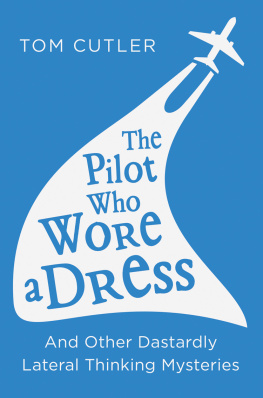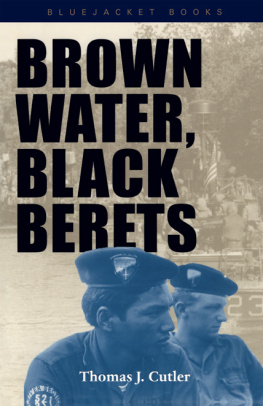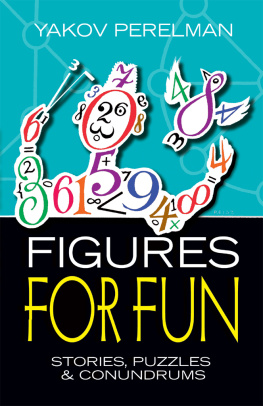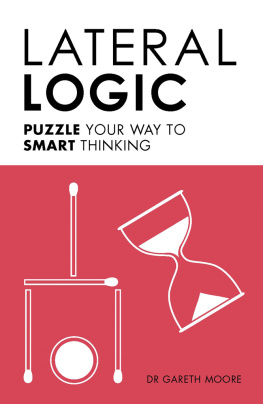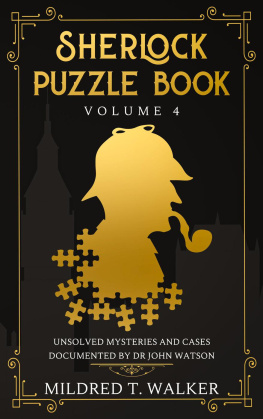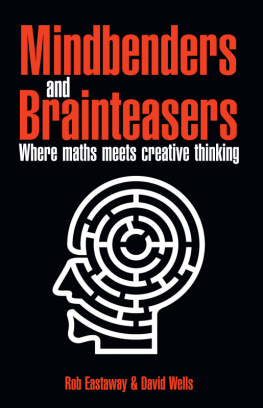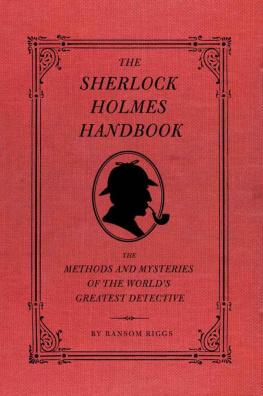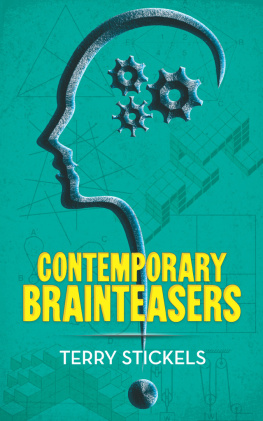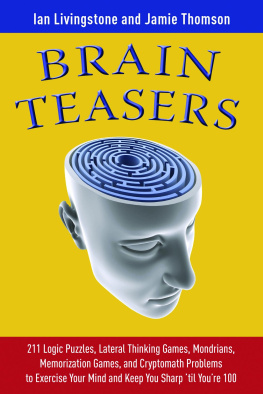Tom Cutler began his career with numerous false starts, as a teacher, set designer, speechwriter, printer, wine waiter, City drone and radio reporter, before settling down in book and magazine publishing. After building up extensive scar tissue he finally threw caution to the wind and launched himself as a humorous writer upon a reading public that had done nothing to hurt him.
Toms books cover a variety of subjects, including language, sex and music. Among his several international bestsellers are, A Gentlemans Bedside Book and the Amazon number-one blockbuster, 211 Things A Bright Boy Can Do. His work has been translated into more languages than you can shake a stick at. Tom has written for the Guardian, the Daily Mail, the Telegraph, the Huffington Post and BBC radio, and he has a regular column in The Chap magazine.
He is a practising magician and member of the Magic Circle, as well as a detective story fan and longstanding Sherlock Holmes aficionado. A lifetimes experience as a very devious bugger has helped him in the writing of this book.
Tom lives at the seaside, where he enjoys kicking pebbles.
If you put your lateral thinking cap on youll realise that the more people I put in my acknowledgments the more books I will sell. This is because everyone I mention will buy at least one copy as a souvenir, and more to give to their friends to make them envious. Maybe The Book of Acknowledgements will be the next big seller.
Anyway, Id like to offer a genuine thank-you to the following people. First, my editor at HarperCollins, Jack Fogg, whose idea this book was, and who first approached me to write it. Second, my always-encouraging agent Laura Morris, for sensible advice, several disgraceful lunches, and at least one wild champagne party that I only dimly remember. Third, my illustrator Bart Aalbers, who has added an exuberant twang to the whole shebang.
Hats off to two old friends, Terry Guyatt, who first told me the story of the man with two girlfriends and gave me some early advice and encouragement, and John Kirby, for checking in regularly.
I thank my pal Chris Tuohy, who alerted me to the joke I used in The annoying computer password mystery, and my new friend David Johnson, for sitting me down in the sunshine at the Yacht Club and listening to my early ideas. Cheers also to another new friend, Patricia Hammond, for sending me the most lovely and unexpected fan letter Ive ever received.
Im indebted to two excellent pub landlords, Richard at The Old Star and Mark at The Royal Sovereign, for providing me with old-fashioned liquid cheer when I was at low tide. I compliment Rob Sr and Rob Jr, Frank and Matt, and Richard, on their hard work, and I especially thank Arthur, for his zest, good humour, craftsmanship and strange unearthly whistling. His Greensleeves is like something out of The Twilight Zone.
Im grateful to the experts in the Magic Circle library, and at West Sussex Libraries, for providing, in the first case, information, and, in the second, refuge when the six people in the previous paragraph were making too much noise.
This book would have been a shadow of itself without the inspiring work of the towering Martin Gardner: mathematician, magician, sceptic, wit, puzzle collector and abundant author. I commend Michael Howell and Peter Ford for their superb 1985 page-turner, The Ghost Disease and Twelve Other Stories of Detective Work in the Medical Field, which filled me in on the Epping Jaundice, the Euston Road poisonings and the mysterious ailment that felled Clare Boothe Luce. I bow down also to Paul Sloane and Des MacHale, whose years of painstaking collecting and publishing of lateral thinking puzzles helped me track down some of the quirkiest, and I propose a resounding three cheers to those anonymous geniuses who came up with them all in the first place.
Finally, I thank Marianne, as usual, for everything.
When people talk of the Golden Age of crime fiction theyre usually referring to the 1920s and 30s, but some authorities believe that we are currently going through another Golden Age. The range, profile and quality of contemporary crime fiction are probably as high as they have ever been.
But one thing the current Golden Age lacks which was very much present in the previous one is a sense of fun.
As embittered middle-aged Inspectors with drink and relationship problems try to identify serial killers, as forensic pathologists sift through decomposing organs, and as dour Scandinavian detectives confront the unalterable bleakness of human existence, crime fiction has lost its traditional link with high spirits. Noir is the new black, and thats just something readers have to take on board.
Im sure, at universities all over the world, doctorates are even now being written about the reasons for this change. Whodunits in which the puzzle was paramount came to a natural end because there were no more puzzles left that hadnt already been done. The country houses, perfectly designed for weekend house parties for guests with dark secrets in their past and offering a wonderful range of domestics to act as witnesses, informants and suspects, did not survive the Second World War. No longer could their owners get the staff, and many were converted into hotels, boys prep schools and secret military training centres.
The great carnage of the war also made the Golden Age tradition of treating death as a kind of parlour game seem a little tasteless. Publications like The Baffle Book, a collection of murder puzzles very popular in the 1930s, appeared to be offensively trivial.
Another development, the abolition of the death penalty in 1965, meant crime novels were left with a lot more loose ends to be unravelled. No longer could the pointing finger of Hercule Poirot at the perpetrator in the library signal the permanent end of a case, with the hangmans noose tying everything up in a neat bow. What had been black and white moved on to a colour-chart of greys.

